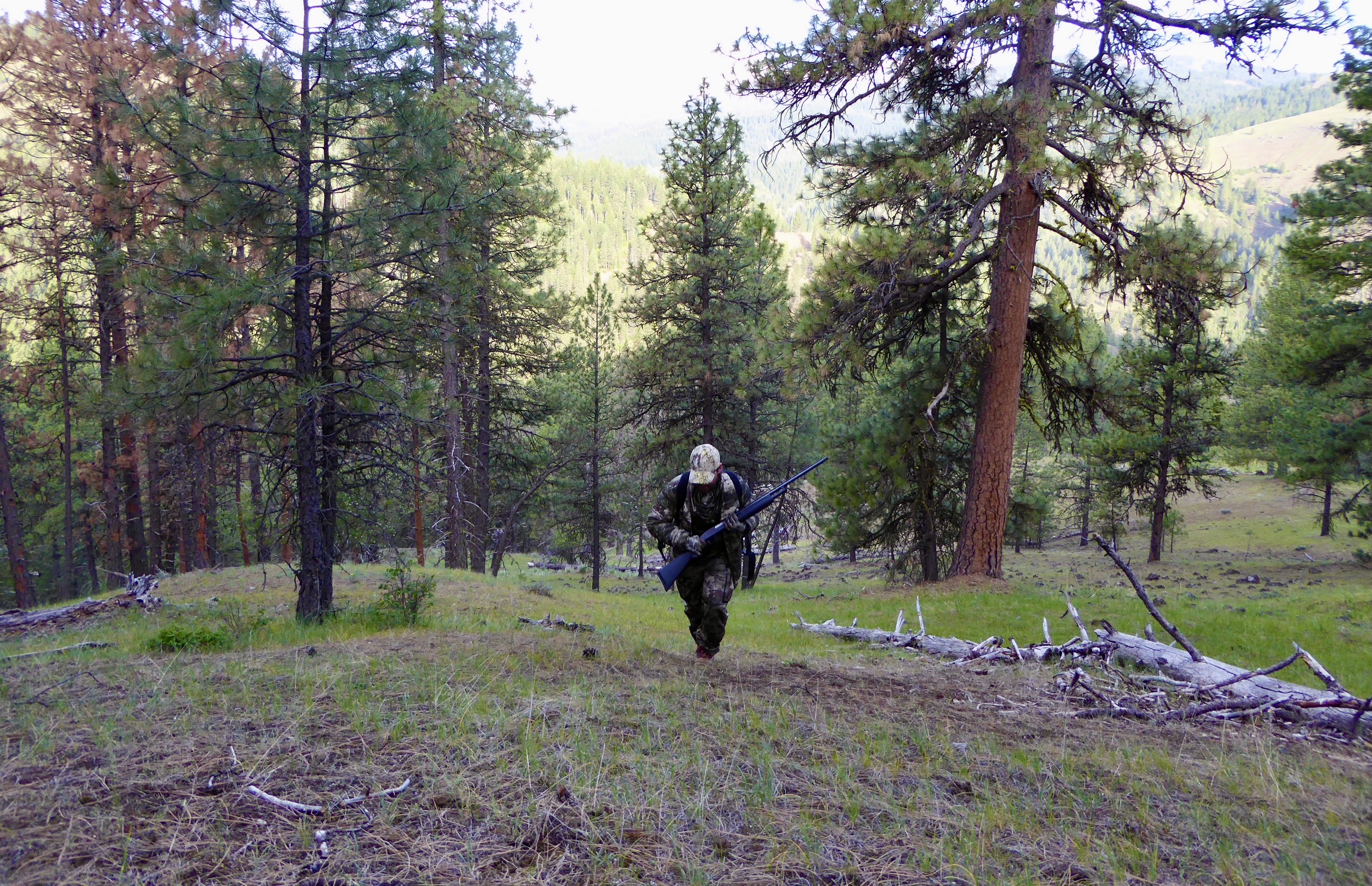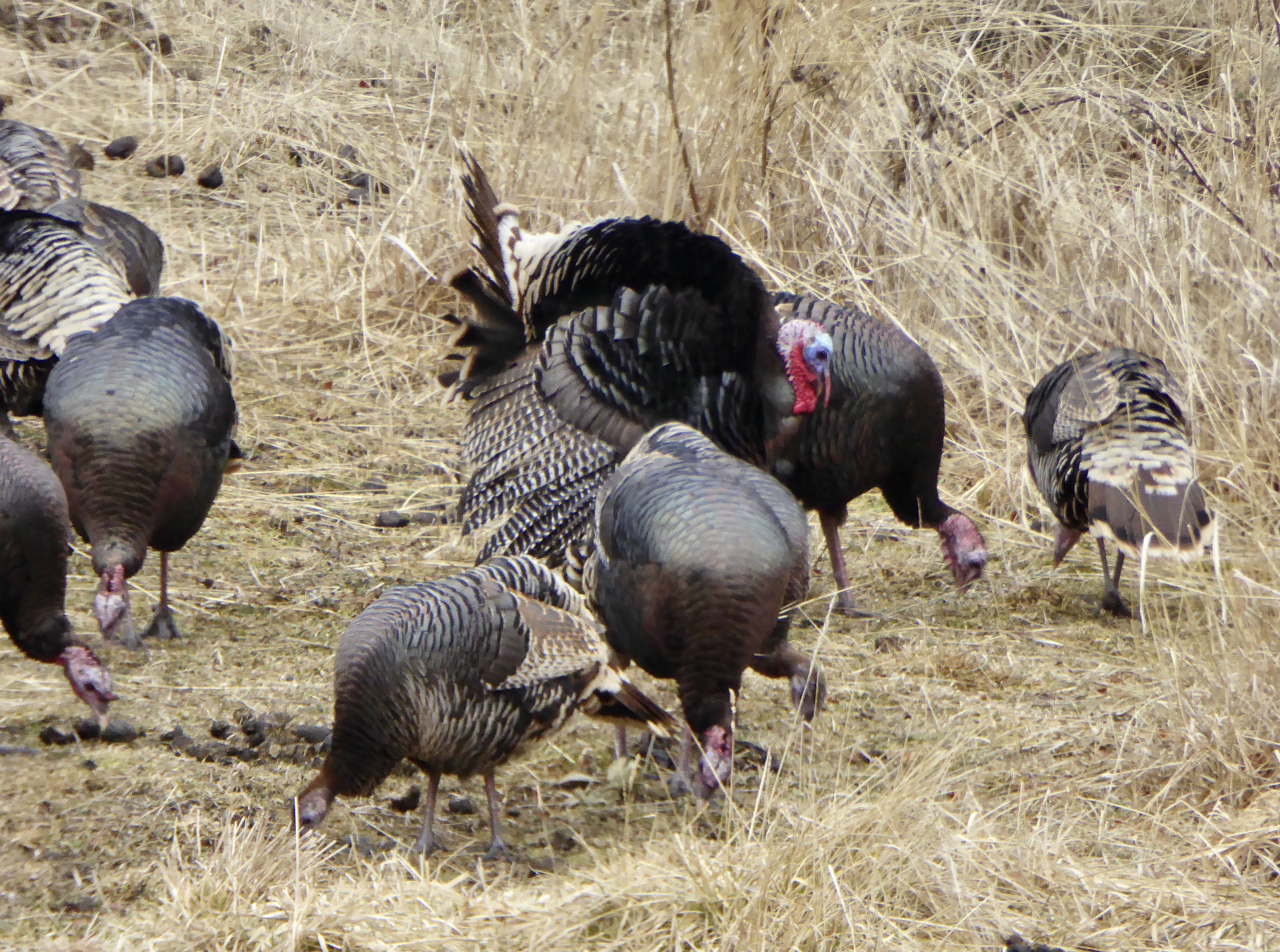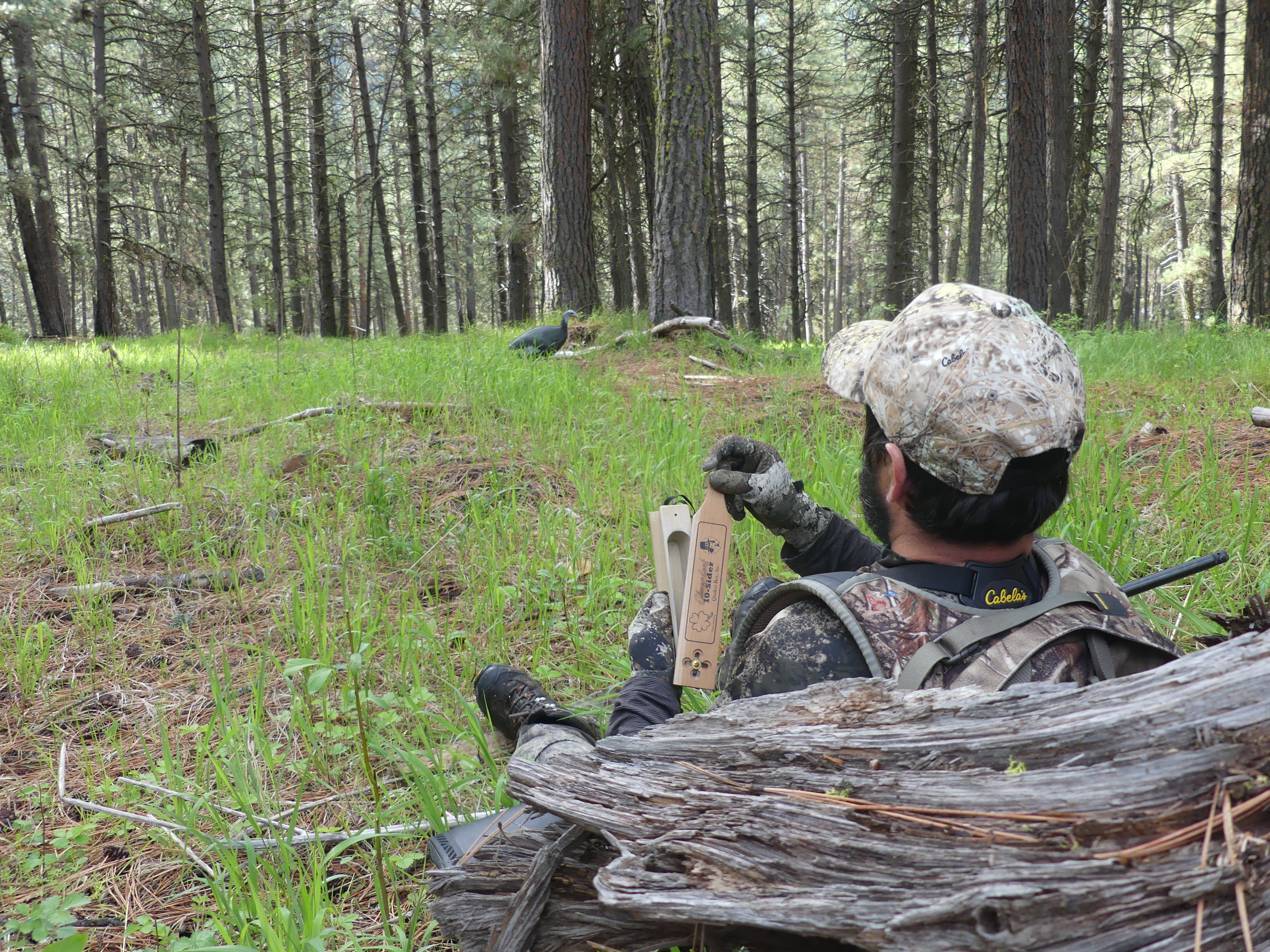Idaho hunters are blessed with about two-thirds of the state being publicly owned, or open for public hunting, which provides some great opportunities for turkey hunting. The birds are plentiful in Idaho, and many of them are found on public land where anyone can access them.

Wildland turkey hunting
Hunters can find turkeys on national forests, Bureau of Land Management land, Fish and Game’s Wildlife Management Areas, along with other lands where Fish and Game has secured access for hunters, such as State Endowment Lands and private timber lands. All combined, there are millions of acres in Idaho to pursue turkeys.
Spring is also a great time to be outdoors in Idaho. Everything seems to be coming alive at once, from plants to animals to insects. You can often combine a spring turkey hunt with other activities, such as spring bear hunts (see the Big Game rules booklet for details) or fishing trips. Lakes and reservoir fishing can be good-to-excellent during spring. Weather is typically mild, so you have the option of camping and further enjoying the outdoors.
Turkey hunting is also a great way to introduce beginners to hunting because it often involves seeing and hearing wild turkeys, which is very interactive and exciting, even if you don’t harvest a bird.
When you take on wily wildland turkeys on their home turf, be ready for a challenge. The flocks can dispersed and mobile, as well as cagey and challenging to pattern. A savvy public lands turkey hunter may want to mimic the tactics of Idaho’s big game hunters by scouting, getting into the backcountry and planning to spend plenty of time in the woods and fields. Fortunately, Idaho offers a long turkey season, and in many areas, the option to kill more than one bird.
Getting started
One attractive thing about turkey hunting is its simplicity. You don’t need a lot of expensive or specialized equipment to get started. A shotgun, turkey loads, and a turkey call or two is all you need, assuming you already have camouflage clothing and a pair of hiking boots. Turkeys have keen eyesight, so camo is critical.
If you have the basic gear, the next thing to do is find a place to hunt. Look on Page 21 of the Idaho Upland Game, Turkey and Furbearer seasons and rules to see the general distribution of turkeys throughout Idaho, and Page 23 shows what areas have general season hunts. The next step is getting out on the ground and finding where the birds are located.

Remember that in many parts of Idaho, turkeys may not stick around where you spot them in early spring. Turkeys often follow the snow line up in elevation as it melts and green forage becomes available, so if you scout too early, the birds may be gone when the season opens in mid-April.
When you’re scouting, the easiest way to locate birds is often with your ears. Male turkeys, commonly known as Toms, have an almost irresistible urge to “shock gobble” when they hear certain noises, such as an owl or crow call. You can also use a turkey call to elicit a shock gobble.
Blowing a locator call can help you locate flocks from a distance and in areas where they’re not easily visible. Another option is finding a vantage point where you can view a lot of country and use binoculars or a spotting scope to locate flocks.
You can hike in the woods and look for sign, such as tracks, feathers and scat. Dirt roads, especially those gated off, can be good places to find turkey sign in the spring and give you a clue where turkeys are feeding or passing through, and scratched up earth can show you where they’ve been feeding, lingering and dusting themselves.
Always be on the lookout for a roost tree, which can be the motherlode of turkey hunting because the flock will often return daily to that roost site unless disturbed.
Daily patterns vs. seasonal patterns
Turkeys will often have a daily routine where they roost, feed, wander and return. They tend to be most active and vocal early and late in the day.
If you understand their patterns, you can pinpoint an area to hunt them. But as earlier mentioned, turkeys also have seasonal movements, typically moving up in elevation during the spring similar to deer and elk as they search for fresh forage as new plants emerge.
That migration may be slow and steady, so you often have a chance to find the flock again where you first spot them, or nearby, but a little higher in elevation. Turkeys tend to return to the same areas every spring, so you may find them again the following year if the snow has melted and weather conditions are similar.

Switching from scouting to hunting
The two are essentially the same, with the obvious difference being you’re trying to get close enough to take an ethical shot when you’re hunting. A few things to keep in mind when hunting public land, or publicly accessible land. First, you may not be alone out there. Making turkey sounds may attract other hunters, and don’t be surprised if you get fooled by the calls of another turkey hunter. After all, you’re all trying to mimic a real turkey.
Make sure when you start calling you have your back to a tree or something solid that could protect you from an errant shot. Also, beware other hunters may have turkey decoys out, so if you spot a turkey, make sure it’s a live bird.
If you realize you’re in another hunters territory, or someone comes into the area where you’re hunting, safely get their attention by waving or calling out if necessary. It may spook any turkeys in the area, but no turkey is worth a hunting accident.
Competition between hunters can be frustrating, but be a good sport. Whoever got there first usually gets the spot, but remember, no one has a special right to hunt in a certain place on public lands, and the other person probably worked as hard as you did to locate birds.
If you want to avoid other hunters, you have several options. First, get as far away from roads and trails as you can and you’re more likely to have an area to yourself. You can also opt to hunt later in the day because many turkey hunters focus on mornings and are out of the woods by late morning or early afternoon. Remember that Toms will gobble throughout the day, they just tend to do it more often early morning and evening.
Also, consider hunting later in the season. Most spring general hunts last until May 25, but most hunters focus their efforts on the early season. There’s about five weeks in the season, and the spring breeding season lasts well into May.
Meet young Clara and her father Kurtis and see her first Idaho turkey hunt

